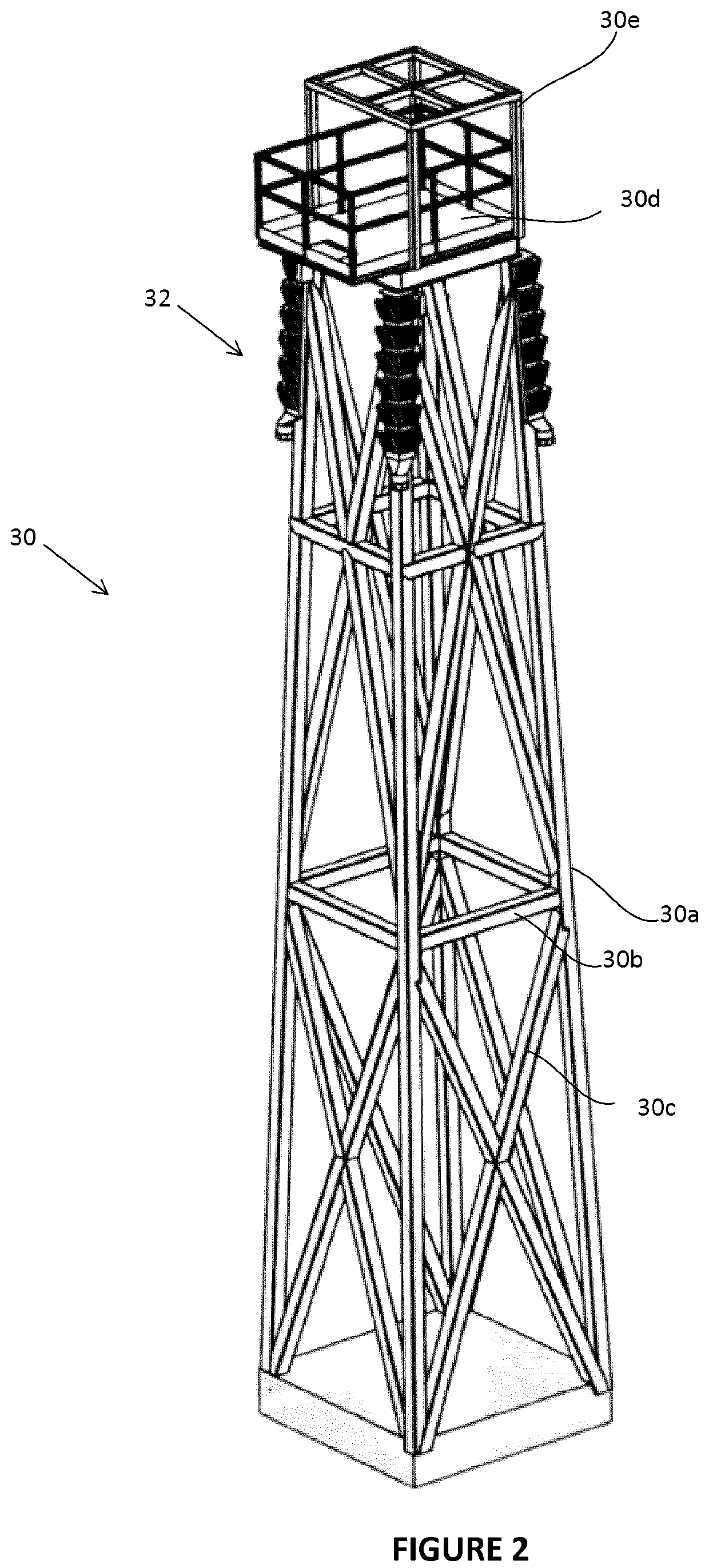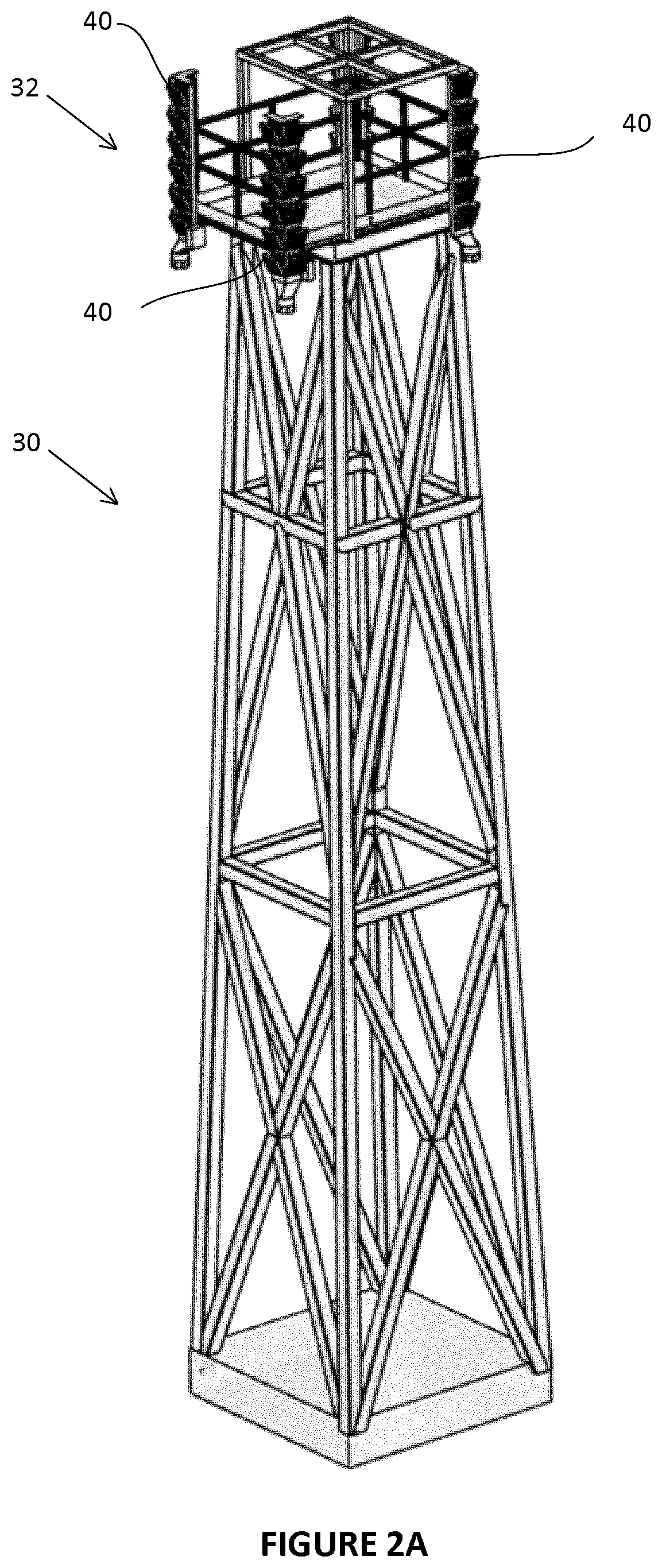Lightweight LED lighting systems for permanent and semi-permanent mounting on elevated structures having integrated support and thermal transfer features
a technology of led lighting and integrated support, which is applied in the direction of lighting applications, lighting support devices, lighting and heating apparatus, etc., can solve the problems of difficult options, large amount of metal required to disperse and draw heat away from high-power led lamps, and low flow rate of led lighting systems. achieve the effect of increasing or decreasing the flow ra
- Summary
- Abstract
- Description
- Claims
- Application Information
AI Technical Summary
Benefits of technology
Problems solved by technology
Method used
Image
Examples
Embodiment Construction
[0069]With reference to the Figures, LED lamp assemblies and LED lighting systems are described that combine structural and heat dissipation properties in combined systems that significantly reduces the weight of LED lamp assemblies and LED lighting systems.
[0070]Although many of the Figures illustrate and / or describe configuration to drilling rigs with higher lumen outputs, these are not meant to be limiting and it is understood that the systems described can be modified for configurations with applicability to smaller service rigs, other rigs of various heights, weights, geometry, etc. and are within the scope and spirit of the present invention. The systems described herein may also be integrated with other support systems. Various embodiments and aspects of the current invention are described that achieve one or more of the following:[0071]a. provide a desired level of lighting;[0072]b. reduce the overall net weight of an LED lighting system when compared to prior art systems;[0...
PUM
| Property | Measurement | Unit |
|---|---|---|
| heights | aaaaa | aaaaa |
| weight | aaaaa | aaaaa |
| weight | aaaaa | aaaaa |
Abstract
Description
Claims
Application Information
 Login to View More
Login to View More - R&D
- Intellectual Property
- Life Sciences
- Materials
- Tech Scout
- Unparalleled Data Quality
- Higher Quality Content
- 60% Fewer Hallucinations
Browse by: Latest US Patents, China's latest patents, Technical Efficacy Thesaurus, Application Domain, Technology Topic, Popular Technical Reports.
© 2025 PatSnap. All rights reserved.Legal|Privacy policy|Modern Slavery Act Transparency Statement|Sitemap|About US| Contact US: help@patsnap.com



